News
Death knell for the wild donkeys
View(s):The wild donkeys of Kalpitiya may soon become extinct with the area getting urbanized fast.
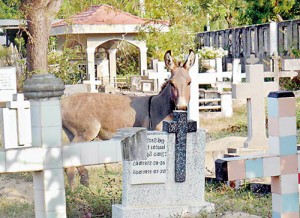
Coming events cast their shadows...?

Story and pix by Padma Kumari Kankanamge.
With the sand dunes and the lagoon areas being taken over for industrial purposes, the favourite haunts of the wild donkeys are disappearing. Suddenly the animals which used to haul salt in the past are being seen as a hindrance to human development.
Deprived of the large plains they used to roam and fast expanding human habitat the animals have been left entrapped and confused.
Today they can be seen wandering into schools, cemeteries and the main roads -lost and miserable in a world they cannot understand.
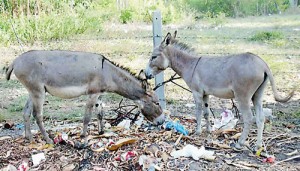
Humans are corralling the donkeys out of their natural habitat
In 1998, a civil servant in the area who was also a naturalist, Chandrasiri Bandara, recorded that 425 donkeys straggled in the area.
Since then no one has shown any interest in the condition of the Kalpitiya donkeys.
But what cannot be missed is that among the surviving quadrupeds there are no pregnant animals or little foals.
The donkeys are in no fit state to breed- which means in no fit state to survive.
In other words they may soon become extinct
Despite being rejected, the donkeys still render valuable service to humans. Their loud braying drives away the coconut beetle, which is a major pest in Kalpitiya with its acres of coconut land.
But for how long will these sentinels be with us?.
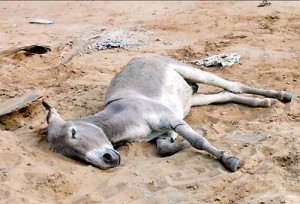 Is this going to be the sad fate of the Kalpitiya donkey? | 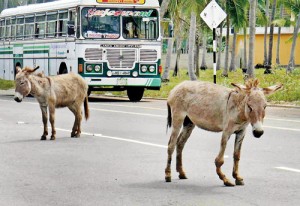 Some wander along the main roads lost and confused… |
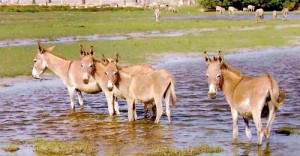 The lagoons, once a haunt of the wild donkey, has been taken over by humans | 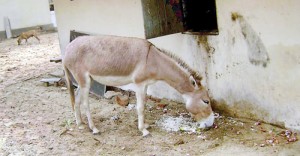 Once free, the donkey has now become a scavenger |
 With no place to go this poor fellow seeks refuge in a classroom |

